A Complete Guide to Keeping This Classic Houseplant Healthy and Happy
Pothos (Epipremnum aureum), also known as Devil’s Ivy, is one of the most beloved houseplants around the globe. Known for its hardiness, stunning trailing vines, and ease of care, it’s a top pick for beginners and seasoned plant parents alike. But even a low-maintenance plant like pothos thrives best with consistent care. So, how often should you care for a pothos to keep it looking lush and healthy?
This complete guide will explore everything you need to know—from watering frequency and light needs to pruning, fertilizing, and pest control. Let’s dive in!
1. Watering: Every 1–2 Weeks Depending on Conditions
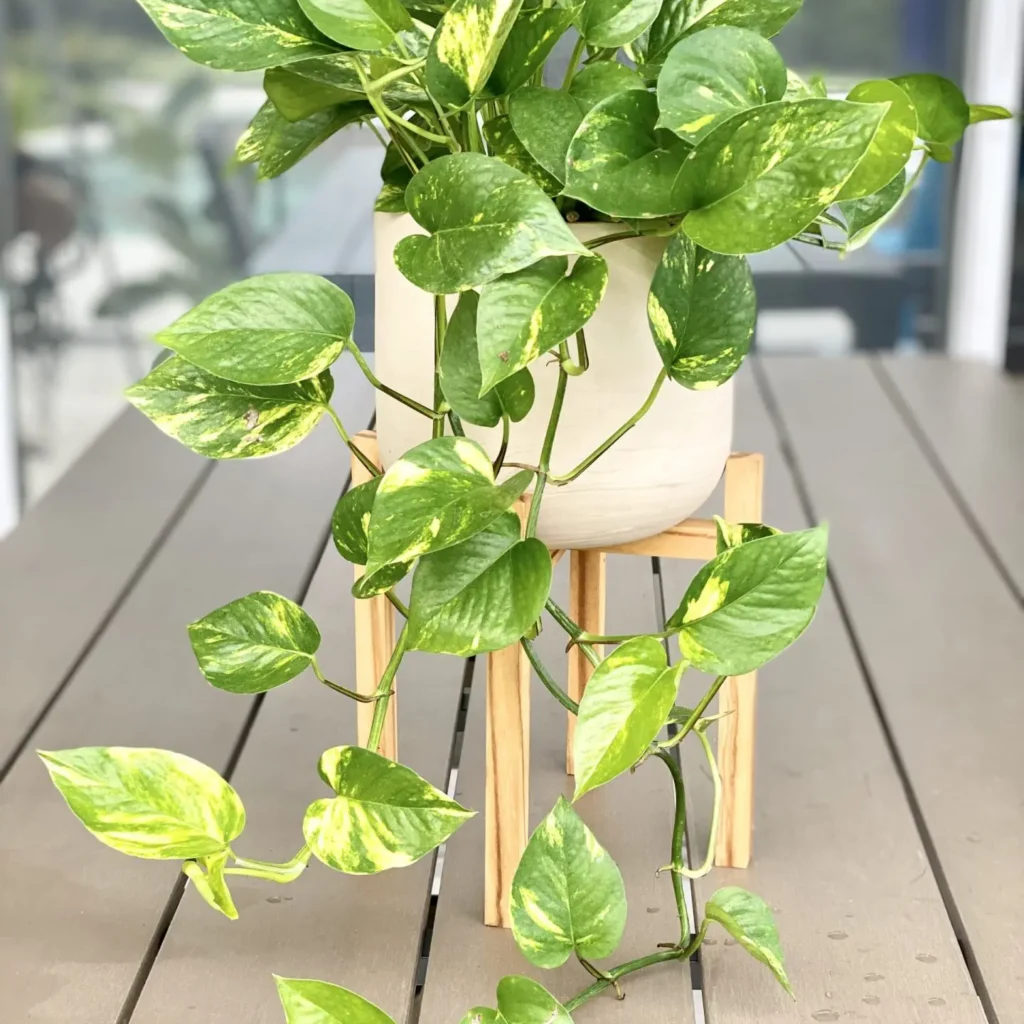
Pothos prefers to dry out between waterings. Generally, watering every 1–2 weeks is ideal, but this depends on several factors—light, humidity, pot size, and soil type. In bright indirect light, the plant may need more frequent watering. In lower light, the soil takes longer to dry out.
Tips:
- Use the finger test: if the top 1–2 inches of soil feels dry, it’s time to water.
- Always empty drainage trays to avoid root rot.
- In winter, reduce watering frequency slightly.
2. Lighting Needs: Bright, Indirect Light for Best Growth
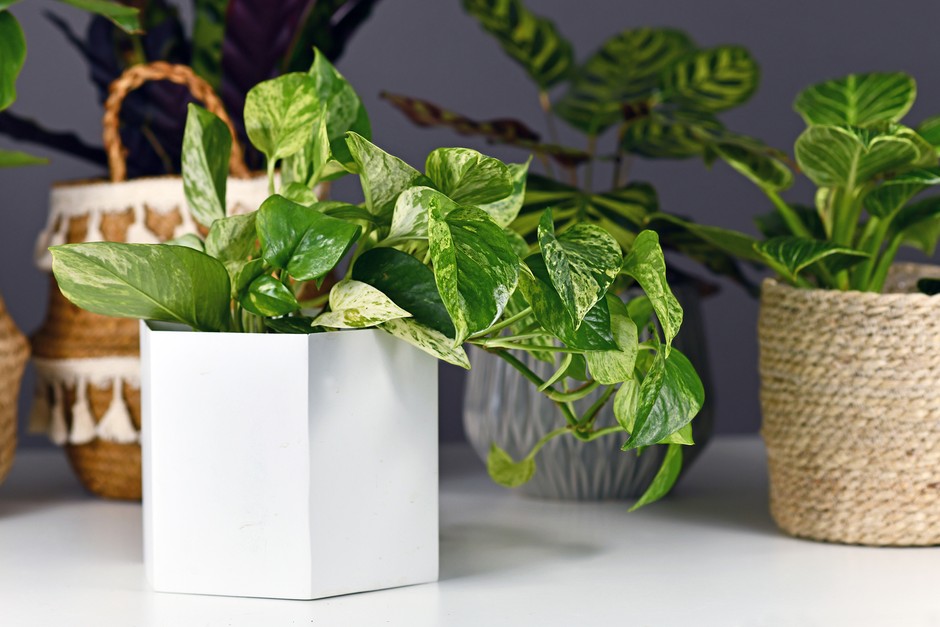
Pothos thrives in bright, indirect light but is incredibly adaptable. It can survive in low-light conditions, though growth may slow, and variegated varieties might lose some coloration.
Care Frequency:
- No daily monitoring needed, but rotate the plant every 2 weeks to ensure even growth.
- Move it closer to a window in winter when daylight is weaker.
Avoid direct sun, which can scorch the leaves, especially on varieties like Marble Queen or Golden Pothos.
3. Fertilizing: Once a Month During Growing Season
Pothos isn’t a heavy feeder, but fertilizing regularly during the spring and summer months will boost its health and encourage new leaf growth.
How Often:
- Feed once a month using a balanced, water-soluble houseplant fertilizer.
- Skip fertilizing during fall and winter when the plant’s growth slows.
Pro Tip: Dilute the fertilizer to half strength to prevent buildup of salts in the soil.
4. Pruning: Every 2–3 Months to Encourage Fuller Growth
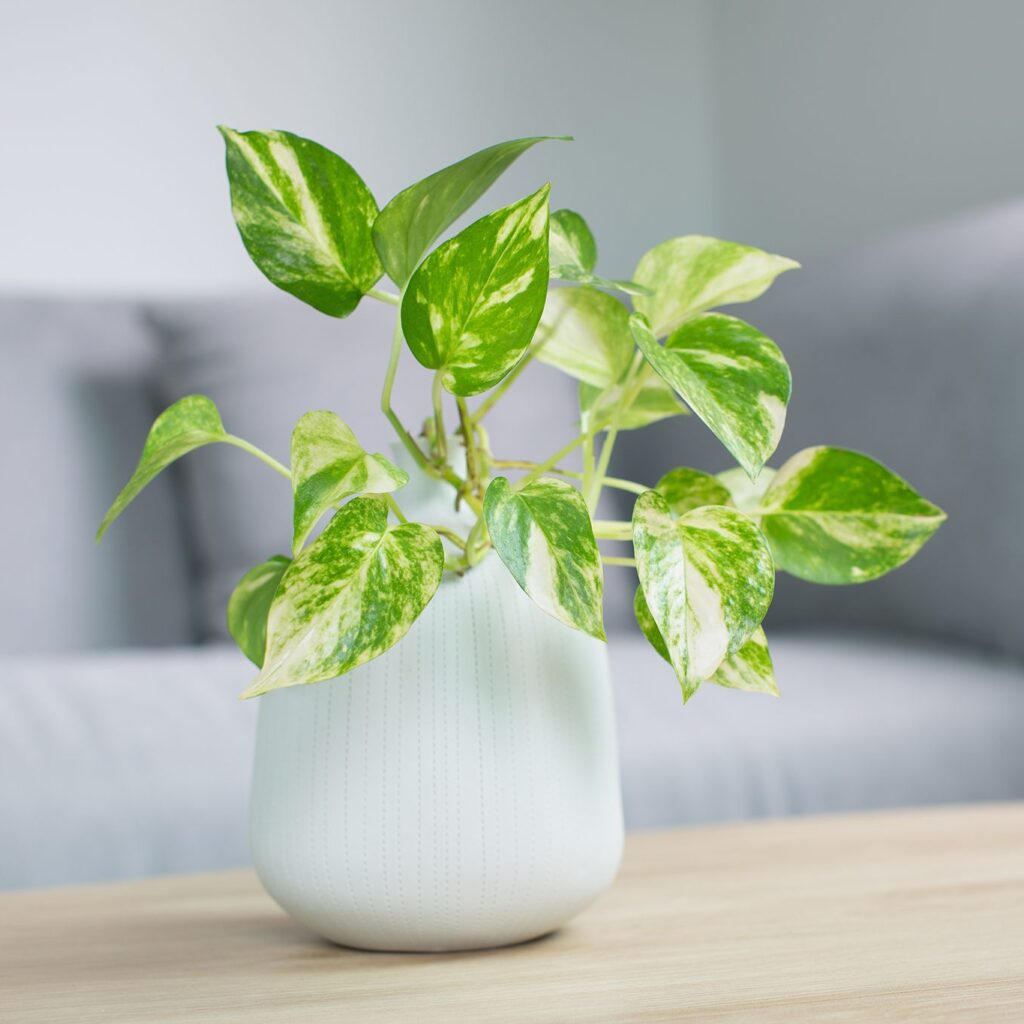
Pruning not only keeps your pothos looking tidy but also encourages branching, resulting in a bushier plant.
When and How Often:
- Prune every 2–3 months or whenever it gets too leggy.
- Use clean, sharp scissors to cut just above a leaf node.
- Regular pruning helps maintain a fuller, more attractive shape.
You can also propagate the cuttings in water to grow new plants!
5. Repotting: Every 1–2 Years Based on Root Growth
While pothos is tolerant of being slightly root-bound, repotting ensures your plant has enough room to grow and access fresh nutrients.
How to Know It’s Time:
- Roots growing out of the drainage holes.
- Water runs straight through the pot.
- Slower growth despite proper care.
How Often:
- Check annually, and repot every 1–2 years using well-draining soil.
Spring is the best season for repotting, allowing the plant to recover and grow through the warm months.
6. Cleaning Leaves: Monthly or As Needed
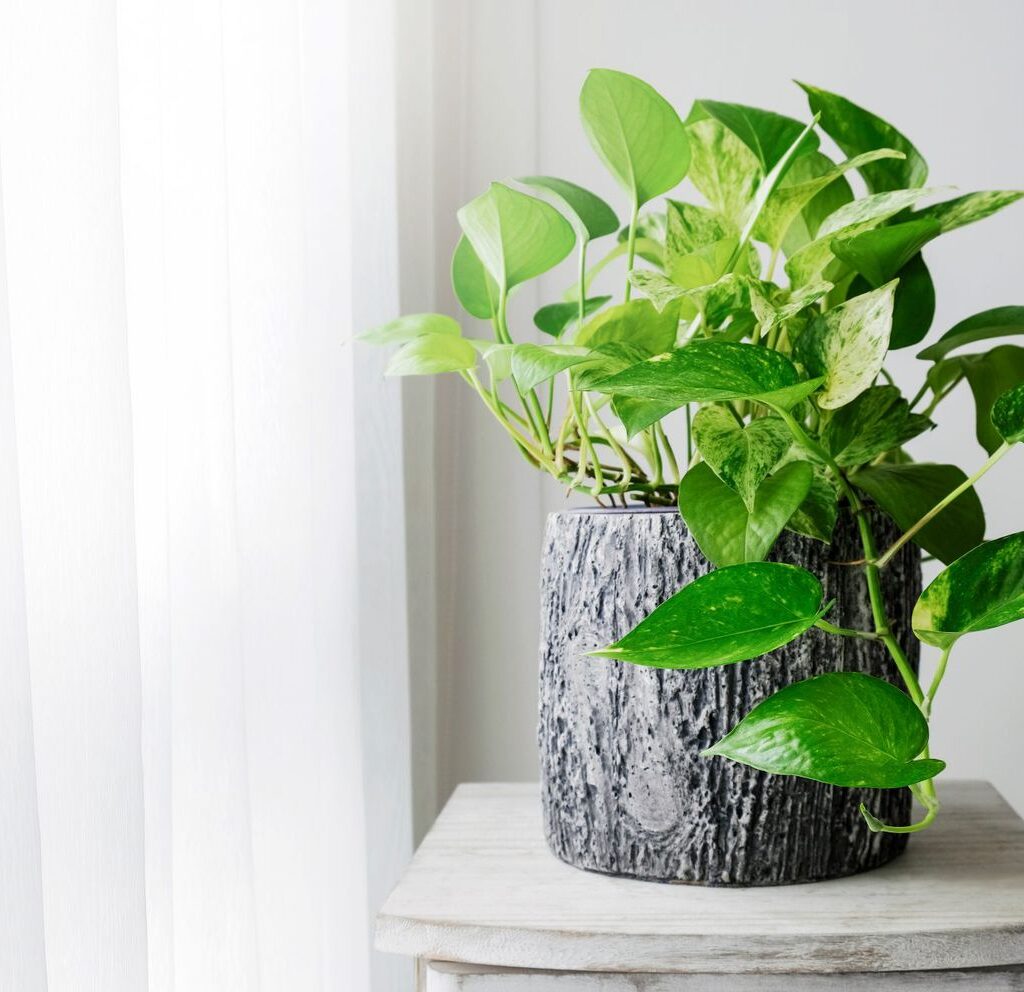
Dust accumulation can block sunlight and slow photosynthesis. Wipe the leaves gently with a damp cloth to remove dust.
Frequency:
- Once a month or whenever the leaves look dull or dusty.
- You can also shower the plant under lukewarm water to clean it thoroughly.
This also helps prevent pests like spider mites or mealybugs.
7. Checking for Pests: Every 1–2 Weeks
Even though pothos is resilient, it’s still vulnerable to common houseplant pests such as aphids, spider mites, and mealybugs.
Care Frequency:
- Check every 1–2 weeks, especially under leaves and along stems.
- Use insecticidal soap or neem oil if pests are found.
- Isolate the plant if it’s infected to avoid spreading pests to other plants.
Preventative checks are easier than curing a full-blown infestation.
8. Humidity and Temperature: Monitor Seasonally
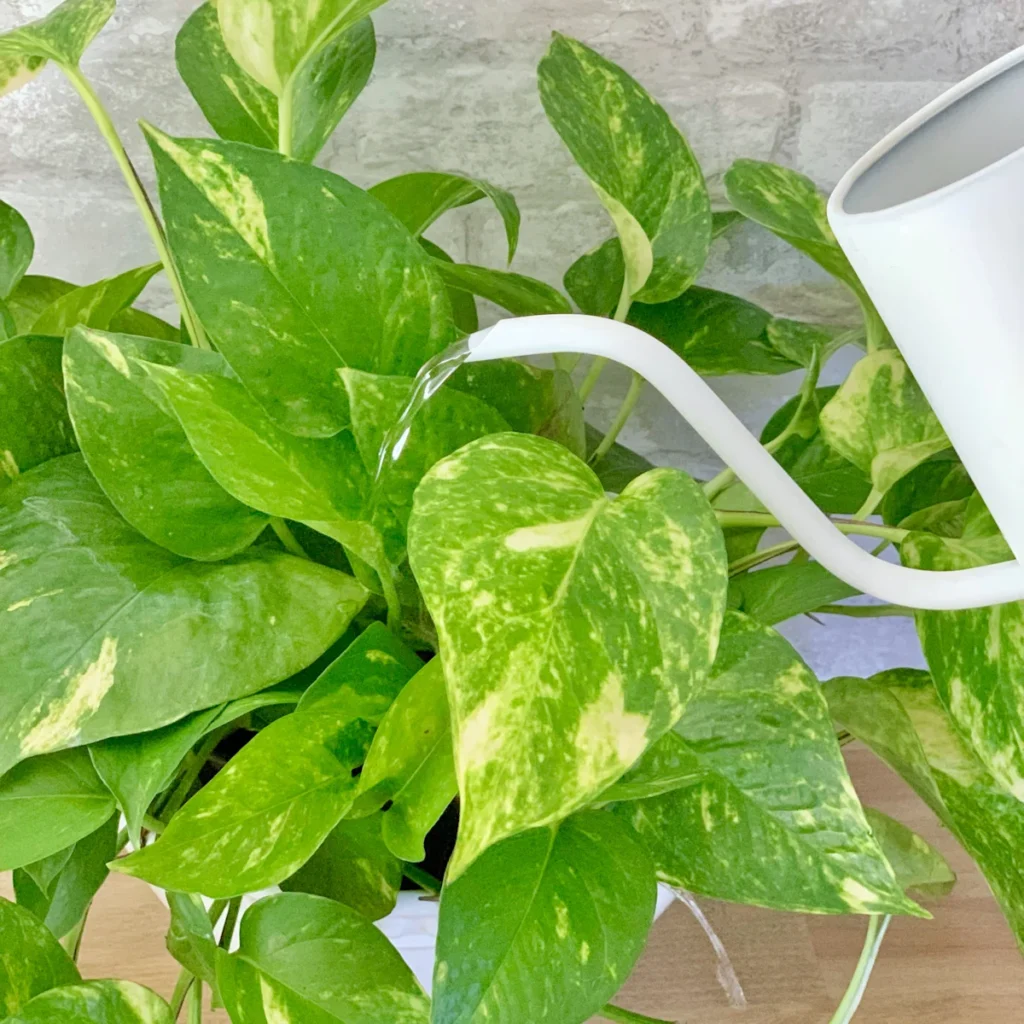
Pothos thrives in average household humidity and temperatures between 60–85°F (15–29°C). In drier climates or during winter heating, humidity might drop.
Care Tips:
- Mist occasionally or place the plant on a humidity tray during dry months.
- Avoid placing near cold drafts or heating vents.
How Often to Check:
- Seasonally or whenever environmental conditions change dramatically.
9. Support and Styling: Train Vines As Needed
To get the most out of your pothos’ trailing beauty, consider training it to climb or cascade.
Care Actions:
- Use hooks, moss poles, or trellises to direct the vines.
- Rearrange as needed every few months.
Regularly guiding the vines prevents tangles and enhances indoor decor.
10. General Observation: Weekly Quick Checks
One of the best care practices is simply observing your pothos regularly.
Look for:
- Yellowing leaves (often from overwatering).
- Drooping (underwatering or stress).
- Brown tips (low humidity or salt buildup).
- Slow growth or fading color (light or nutrient issues).
Spending just 5–10 minutes a week checking your plant helps you catch and correct problems early.
Conclusion: Caring Consistently Pays Off
So, how often should you care for a pothos? While this hardy plant doesn’t demand constant attention, it does appreciate a little regular love. A simple weekly glance, watering every 1–2 weeks, monthly feeding and cleaning, and seasonal adjustments for light and potting are more than enough.
By creating a routine and observing its signals, your pothos will reward you with long, trailing vines and vibrant, lush foliage that can elevate any space. Whether you’re a beginner or a seasoned gardener, pothos proves that plant care can be low-effort and highly rewarding.





